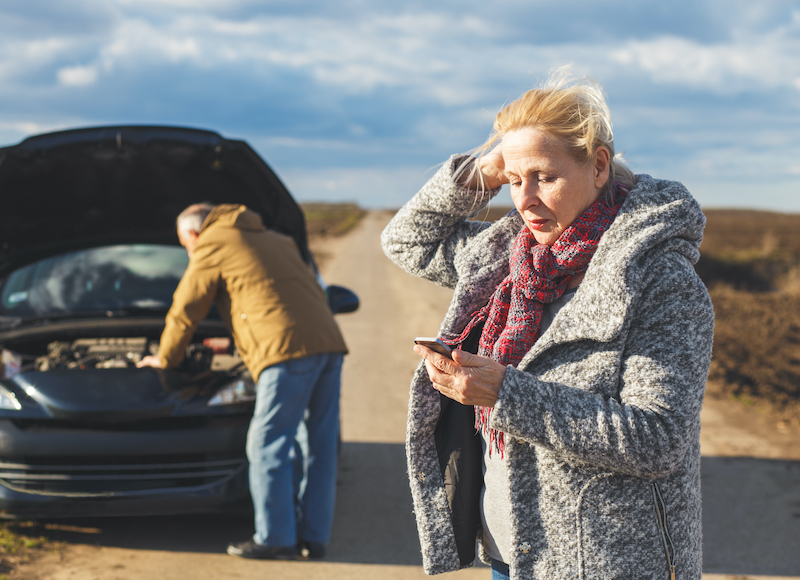What Are The Key Components of Your Car’s Braking System?

Even the most novice of drivers know the importance of a car’s braking system. The safety of you, your car, your passengers, and everyone else you pass on the road depends on it. But do you know the parts that make up your braking system? Or how to spot problems, should they arise?
The Key Components of Your Car’s Braking System
While all car braking systems are similar, they are not all identical. With a variety of configurations possible. Most contemporary cars have four disc brakes. Some utilise disc brakes on the front wheels and drum brakes on the rear wheels. While a small number of vehicles use a four-wheel drum brake system. Regardless of your car’s configuration, its braking system will still comprise most of the following features.
Brake master cylinder
Your brake master cylinder is a hydraulic pump. And its role is to feed brake fluid into the brake circuit. This transforms the pressure on the brake pedal into hydraulic pressure. Making it easier for you to press the brake pedal and create a reaction.
The common problems with the brake master cylinder and how to spot them
The most common problems with the brake master cylinder arise from either leaking or contaminated brake fluid. And the first sign of this is usually that your brakes have become less responsive. You may also notice that your brake pedal sinks into the floor when pressed. If you notice either of these things, it is wise to see a mechanic.
Brake rotor
The brake rotor is a large metal disc that sits inside the wheel and can look like it is part of your car’s hubcaps. As they spin, they produce kinetic energy, which turns into thermal energy. Every time you press your brake pedal, it tells your calipers (via the master cylinder) to squeeze your brake pads against the brake rotors, slowing your car.
The common problems with the brake rotor and how to spot them
Because they are subject to frequent friction, brake rotors wear out over time. This will usually be characterised by a vibration and/or a squealing or grating noise when you press the brake pedal. Brake rotors can also overheat – and subsequently warp – with heavy usage.
Brake drum
Usually only found on rear wheels now, the brake drum is a cylindrical drum attached to the inside of a car’s wheel. Friction caused by brake shoes pressing against it can help your car to slow and stop.
The common problems with brake drums and how to spot them
Brake drums are less reliable than the brake rotor system, so they are now used less frequently. The common problems are wear, a build-up of dirt, and over-heating. And again, the first you’ll know of this is a grinding or screeching noise when you brake, and a reduction in the responsiveness of your brake pedal.
Brake pads
Your brake pads are probably the most ‘disposable’ part of your car’s braking system. They are designed to be easily replaced because they wear and erode slightly every time you apply your brakes. When you press your brake pedal, your brake pads are squeezed against the brake rotor, helping to reduce your speed.
The common problems with brake pads and how to spot them
Most brake pads need to be replaced between every 25,000 miles and 65,000 miles, simply through wear and tear. If your car is taking longer to stop than usual, or making a grinding sound when you press the brakes, it probably means that your brake pads need replacing.
Brake Shoes
Brake shoes are only present on cars with a drum brake system. They work in much the same way as brake pads, but are slightly less responsive. They are now usually only used on the rear wheels of cars, as the front brakes do most of the work.
The common problems with brake shoes and how to spot them
Again, the most common problem drivers experience with brake shoes is that they wear down over time. And this is characterised by vibrating, screeching, and grinding when the break is pedal is pressed. You may also notice your car pulling to one side when you brake.
Brake caliper
Brake calipers hold your brake pads and squeeze them against the brake rotor when you apply pressure to your brake pedal. They are attached to your vehicle by a bracket, and sit on either side of the brake rotor.
The common problems with brake calipers and how to spot them
Brake calipers tend to be more durable than the other parts of your braking system. But they do sometimes go wrong. And corrosion, leaks, and a build-up of dirt are the most common issues that cause brake calipers to fail. This will usually be spotted during your MOT. But you may also notice that your car is pulling to one side when you brake.
These are the integral parts of your car’s braking system. While there are multiple secondary components that also play their part, they are less easy to identify. And keeping track of the key constituents is the best way to keep your car – and you – safe on the road.
If you are looking for low-cost high-quality car brake parts, check out Online Automotive.





